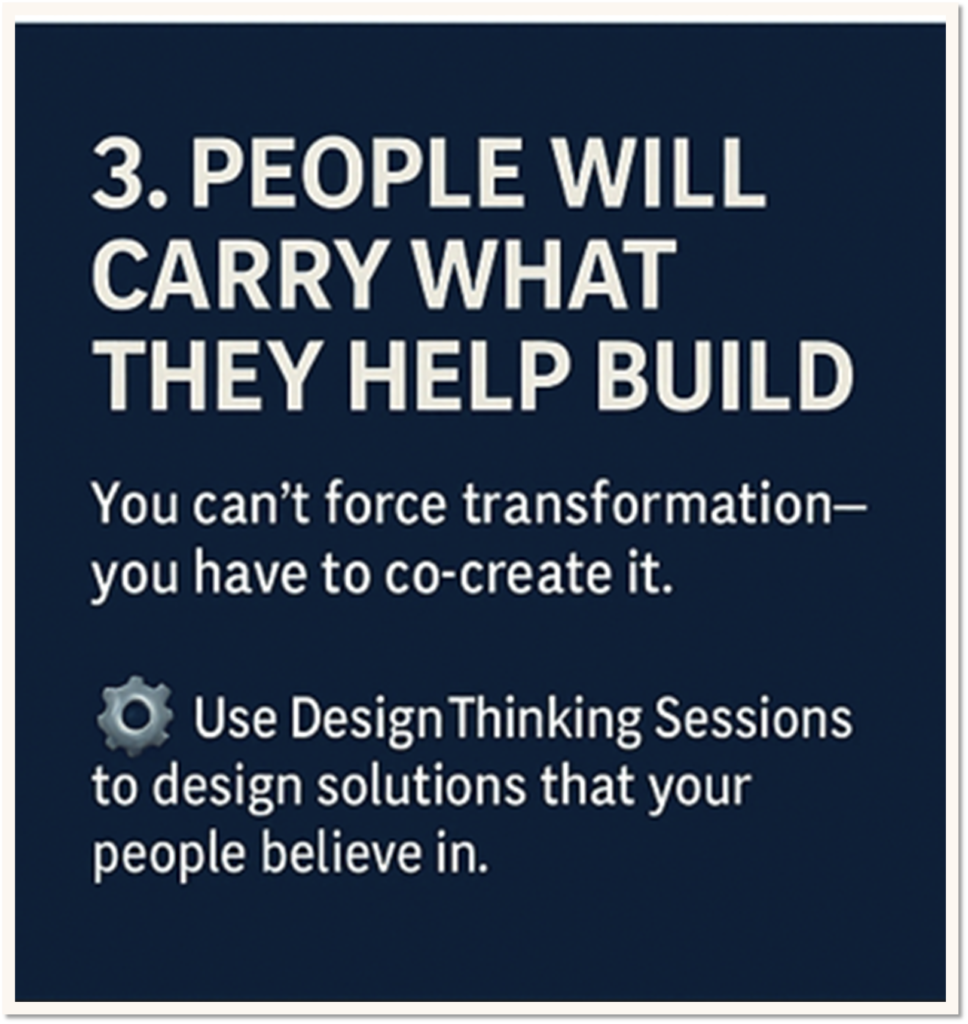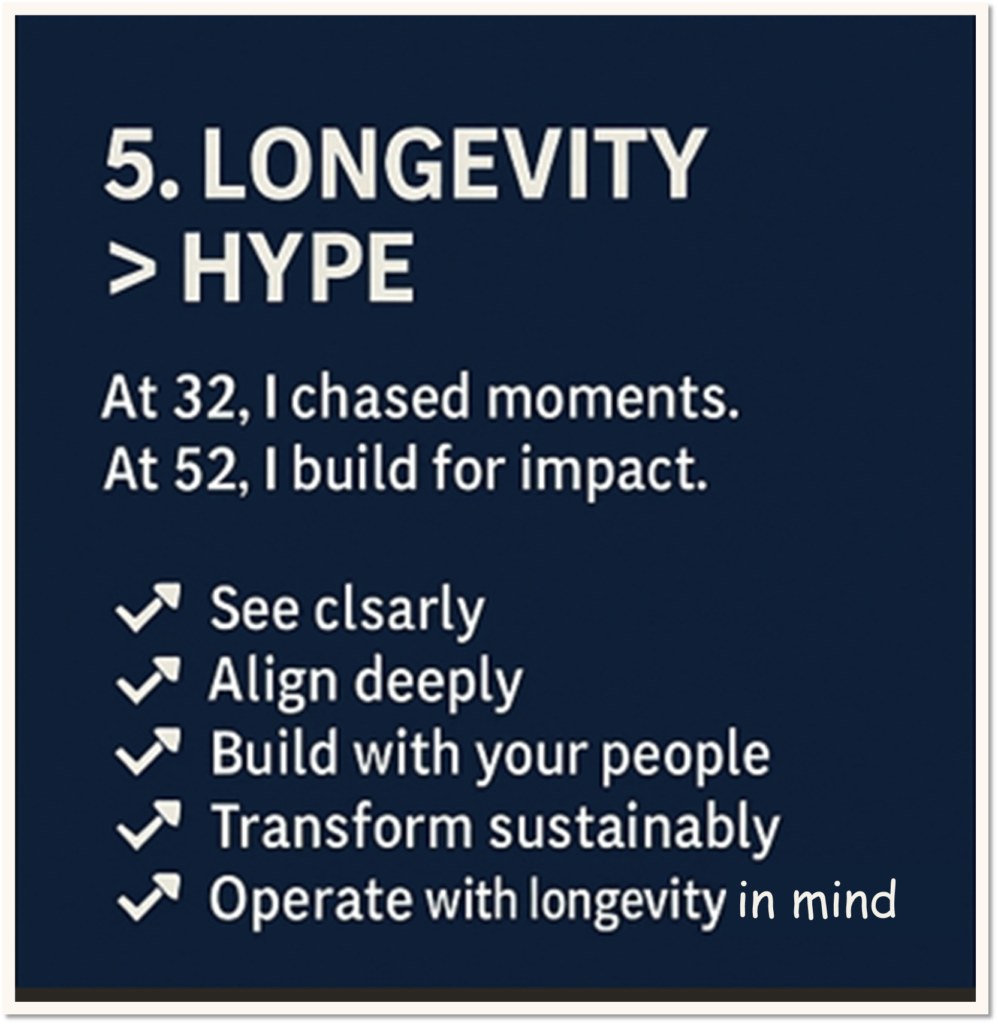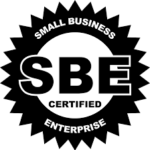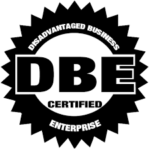I recently turned 52.
And while birthdays often invite celebration or nostalgia, this one brought something different: clarity. Not just about who I am, but about how leadership, strategy, and growth really work—especially after you’ve had enough time to build, break, and rebuild a few times.
But this reflection isn’t just personal.
Because what I’ve realized—after two decades of building organizations, advising leaders, and designing transformation strategies—is that what finally clicked for me at 52 could save others years of wasted time, effort, and misaligned momentum.
If you’re a founder trying to scale with integrity…
If you’re an executive stuck between vision and execution…
Or a public-sector leader trying to design for people instead of just policy…
Then what follows isn’t just a look back. It’s a fast-forward.
In this article, I’ll share five lessons I could only learn through time and tension—but that you can apply right now, no matter your age or stage. And I’ll show how we at Saulsberry Group help organizations put those lessons into motion—through clearer strategy, smarter design, and transformation that lasts.

1. Clarity is Earned—and Organizations Pay for the Lack of It Every Day
At 32, I thought action meant progress.
I now know that misaligned action is often more dangerous than standing still.
Many leaders mistake urgency for clarity. They push forward because “standing still” feels like failure. But speed without strategy burns cash, confuses teams, and erodes trust.
That’s why the first thing we offer clients is often the most valuable: a Business Healthcheck. It’s not just a status report—it’s a realignment tool. It helps founders, executives, and city leaders pause long enough to see where they are, how they got there, and what needs to shift before the next decision gets made.
Clarity always costs something.
But confusion will bankrupt your momentum.

2. Strategy Without Structure Is Just a Speech
One of the hardest lessons I’ve learned is that vision isn’t enough.
You can have the boldest ideas in the room, but if your organization doesn’t have a system to carry them—you’re just adding weight to already overwhelmed teams.
At Saulsberry Group, our Strategic Operating Model helps organizations translate goals into infrastructure. We define roles, workflows, decision paths, and performance metrics that ensure everyone—from the executive team to the front line—is moving in the same direction, at the same tempo.
When your structure reinforces your strategy, success becomes consistent—not accidental.

3. People Will Carry What They Help Build
Here’s a truth I wish more leaders accepted earlier:
You can’t design transformation for people. You have to do it with them.
At 52, I’ve come to respect that empathy is a strategic asset—not a soft skill. The companies that design with, not over, their people are the ones that unlock creativity, loyalty, and resilience.
That’s why our Design Thinking Sessions are central to how we help clients reset or reimagine key systems. These aren’t abstract workshops—they’re high-impact strategy accelerators. We bring diverse voices to the table, challenge assumptions, and co-create solutions that are as inclusive as they are executable.
Because transformation only works when people recognize themselves in the process.
4. Transformation Is Not Change—It’s Commitment
Change is often reactive.
Transformation is deliberate.
Where change management typically tweaks policies, restructures departments, or launches tools—transformation reshapes the entire system. It requires intention, governance, culture shifts, and sustained alignment.
That’s why our clients turn to Saulsberry Group’s Transformation Management Office (TMO). It’s a disciplined framework that ensures your strategy doesn’t just live in a deck—it lives in your operations, communication, and decision-making processes.
We don’t “manage change.” We build transformation capacity—so you can keep executing long after the excitement fades.

5. Longevity > Hype
At 32, I chased moments.
At 52, I design for movement.
And the difference, I’ve found, is staying power. I’ve seen businesses implode after their first media hit, leaders burn out after their biggest raise, and cities regress after brief moments of “innovation theater.”
Now, I build with a different question in mind:
Will this still be working when no one’s watching?
Everything we do at Saulsberry Group—from diagnostics to design, operating models to transformation governance—is focused on durability. Because when you’re no longer seduced by speed, you start to design things that last.
Final Thought: 52 Moves Ahead
You don’t have to be 52 to benefit from what I’ve learned at 52.
What you need is a willingness to pause, ask better questions, and rebuild what’s not aligned—from your business model to your team dynamics to your city strategy.
So if you’re tired of reactive decisions…
If you’re done watching good plans fall apart at execution…
If you’re ready to design something that moves with grace, clarity, and longevity…
Let’s talk.
Because the future doesn’t belong to the loudest or fastest.
It belongs to the most aligned.
And alignment starts with seeing things clearly—maybe for the first time in years.
Let’s get you 52 moves ahead—today.



